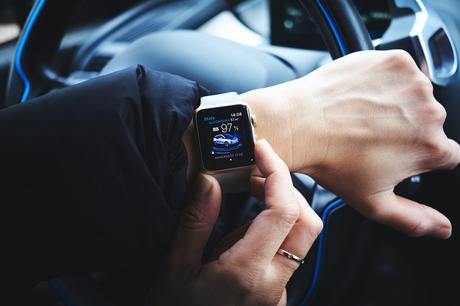
Wearable technology authorizes the continuous monitoring of human physical and behavioral activities. It can also, physiological and biochemical parameters in daily life. Mostly commonly measure dada include vital signs like heart rate, blood pressure, body temperature, blood oxygen saturation, posture, and also physical activities the use of ECG, BCG, etc. Wearable videos and photos can also, provide additional clinical information. The wearable device can attach to shoes, eyeglasses, earrings, clothing, gloves, and also watches. The sensors can also embed into our environment like chairs, cars, and mattresses, etc. The smartphone is typically used to gather information and also transmit it to a remote server for analysis and storage. There are different types of wearable devices are used for studying gait patterns.
Related: 20 Healthcare App Development ideas for Healthcare Startups
Here are 5 things in which wearable technology is one of the most promising things for healthcare. This is an advanced technology that healthcare more access to data to understand patient behavior and also improve its care. There is a proliferation of wearable technology from user’s gadgets such as Fitbit, to medical devices that are approved.
1. Important Data from Wearable
There are multiple wearable devices that can provide you information on heart rhythm and also, the patient’s behaviors. The information also includes blood pressure, breathing patterns, and blood glucose level. These devices can also, carry an incredible amount of information and the data can also, start searching their way into electronic health records. They explained that the devices are still in their beginning stages. There is some question about the reproducibility of the measurement from these devices in this situation, you need to not worry about it.
2. Wide Array Wearable Technology
The typical idea of a wearable device is a fitness tracker and some other smart electronic device and can also, worn on the body. Hence, it is a huge range of types of devices that include the implantable device and approves by the authorities. It is an ingestible sensor that embeds in the pill that transmits a message to a wearable patch and transmits information to a mobile application.
3. Wearable Data for Future of Healthcare
Wearable data could be the future of healthcare at the world economic forum. The expert in healthcare technology like wearable devices. The role of inpatient center preventive care is that they are increasingly using to clinically monitor heart rate, blood pressure, and also, other vitals. These wearable devices can also, pick up and transmit to providers that help to transform healthcare from delivering care to preventive care.
Related: What is Trending technology in Android 2021?
4. Wearable use in Clinical Trials
You can use data from a wearable in clinical trials and digital technology is allow to investigators to reimagine clinical trials, Wearable can one source where the information trial can collect like the amount of sleep, physical activity, and also heart rate. It allows the data collected passively and produce representative images. The wearable devices are generally for data collection endpoints. What do you do with the data coming off the device and how the data is transfer to other devices? How the device sends information to the database for interpretation are challenges that present in the follows of data.
5. Outcomes of Wearable Data
Wearable technology is still in the early stages and not enough proof that improves patient outcomes according to a study. There is n to enough evidence to show that the wearable data. They collect can also, collect the real impact result in a meaningful method. Wearable technology serves the main two objectives to track the specific situation and also help users maintain good health. The technology can collect data for executive roles. The collectible data con include steps taken, food, sleep movement, breathing, and also water intake.

